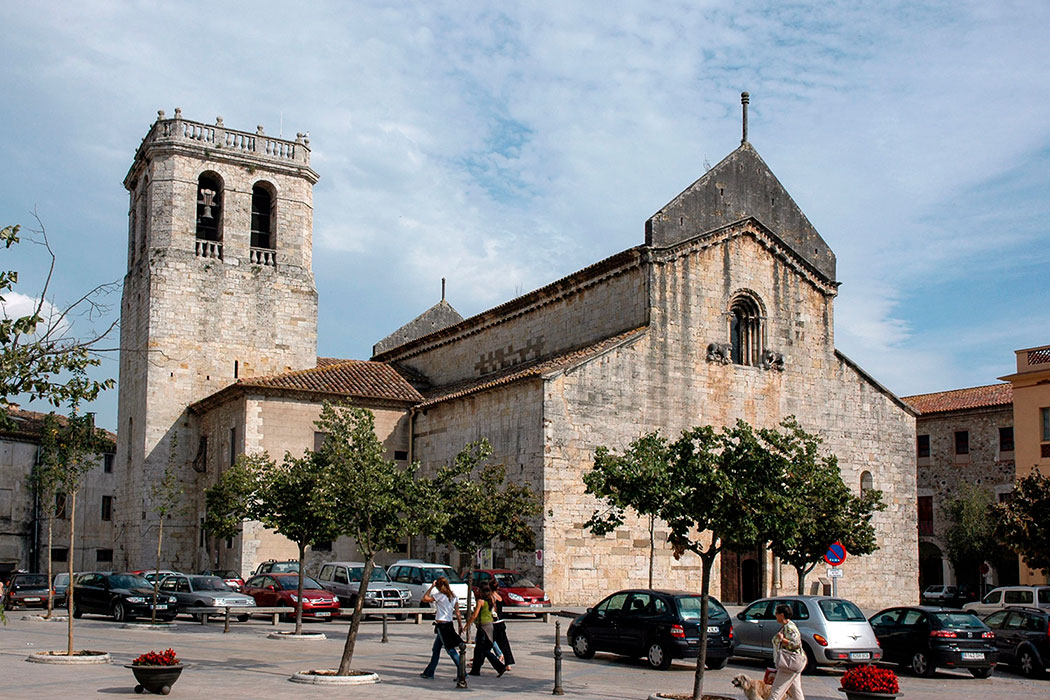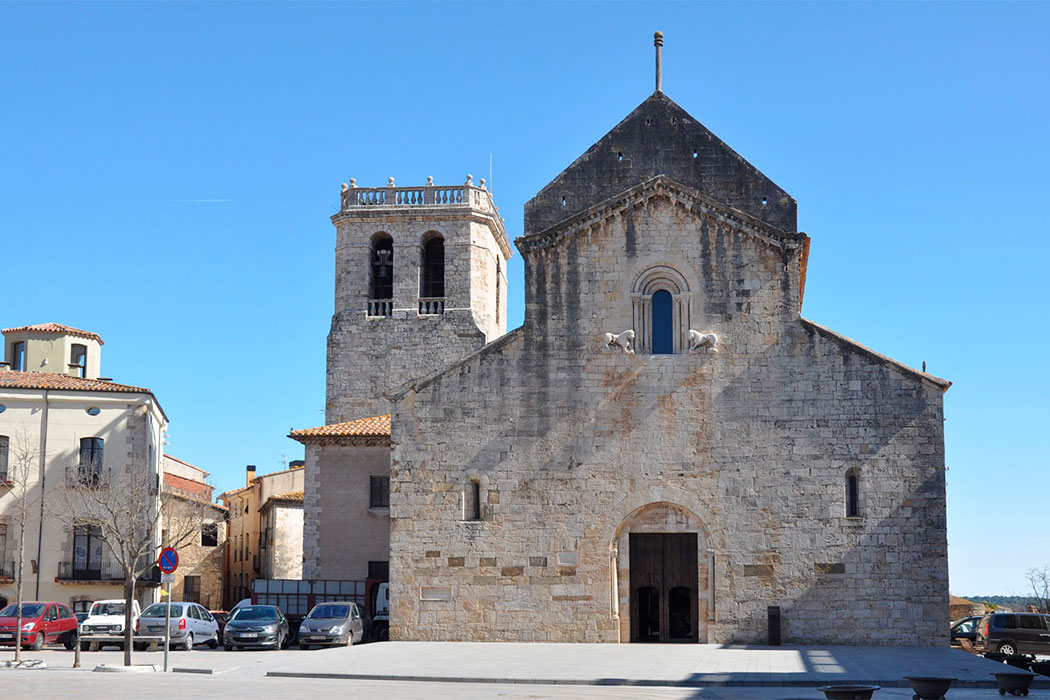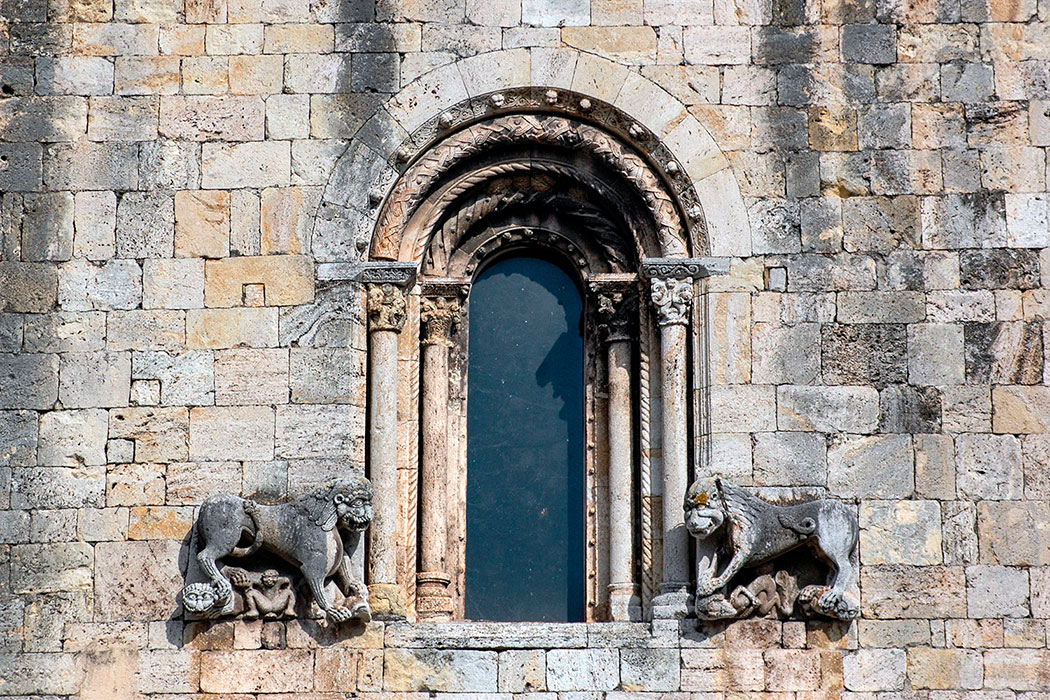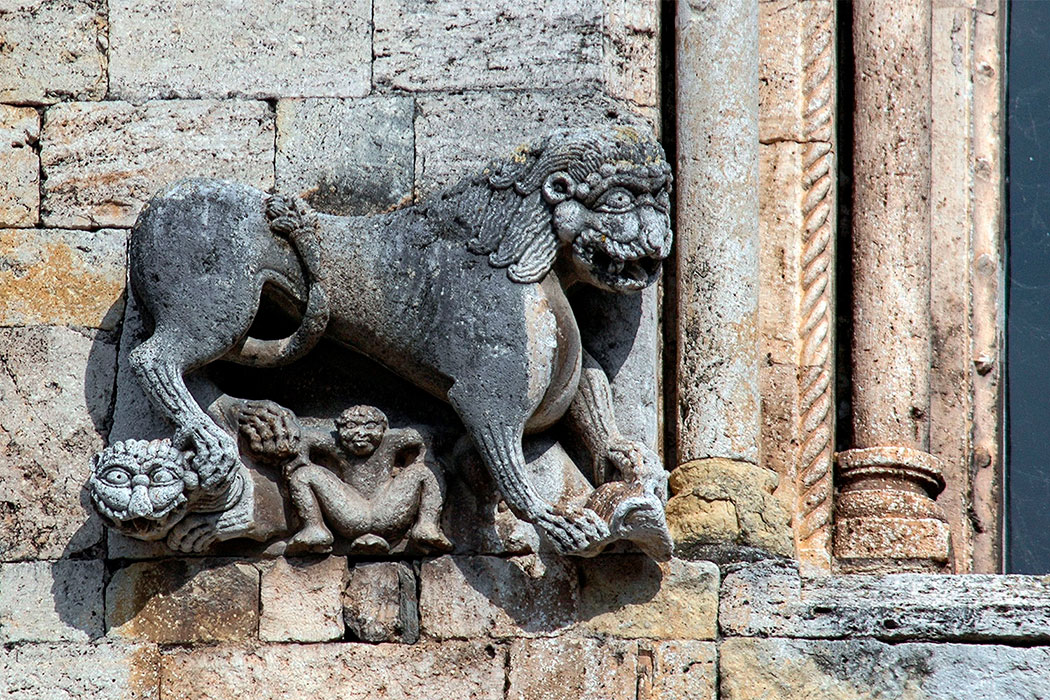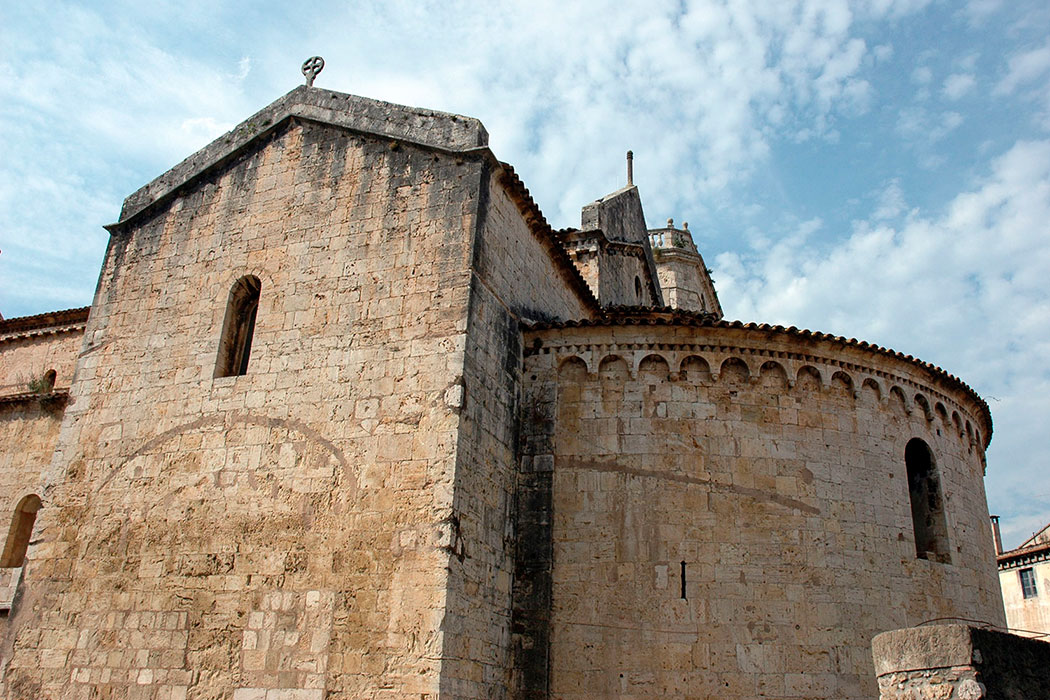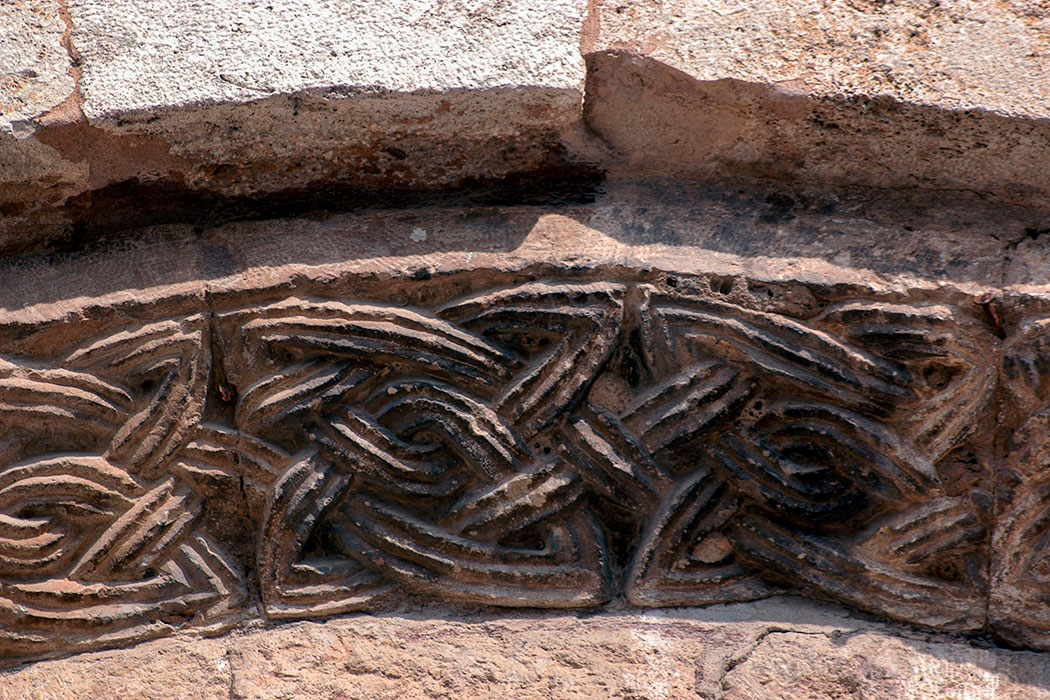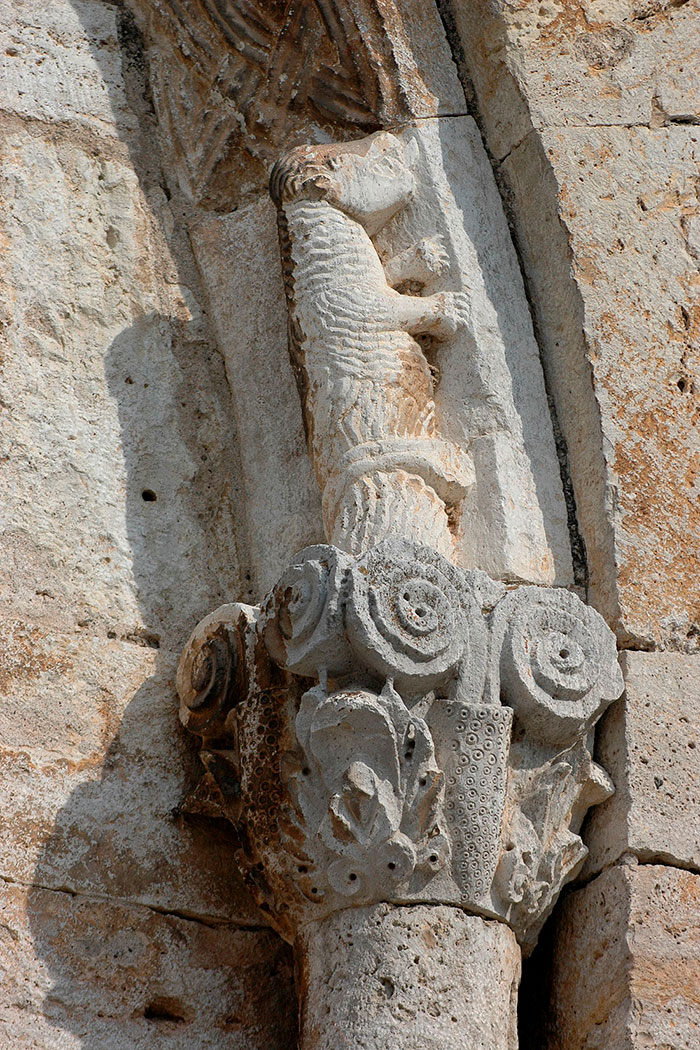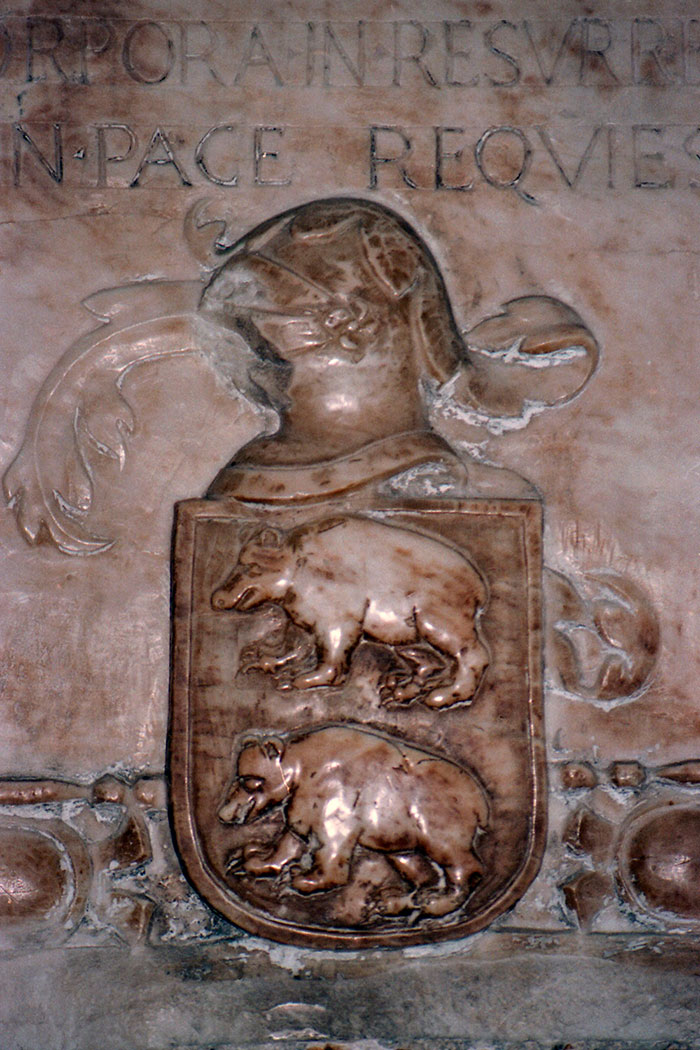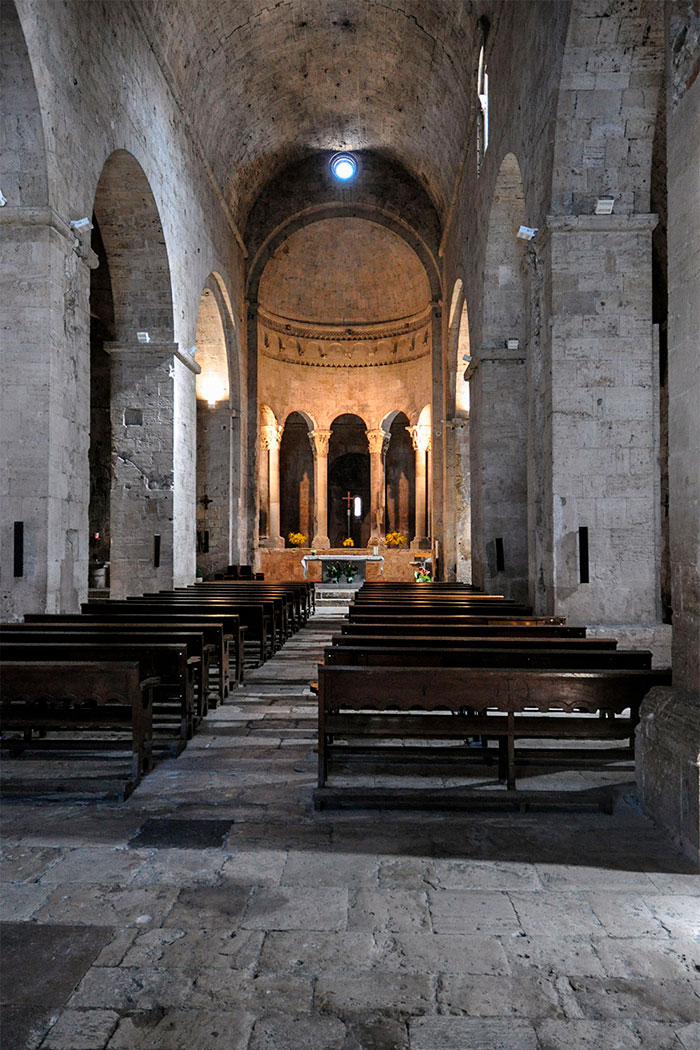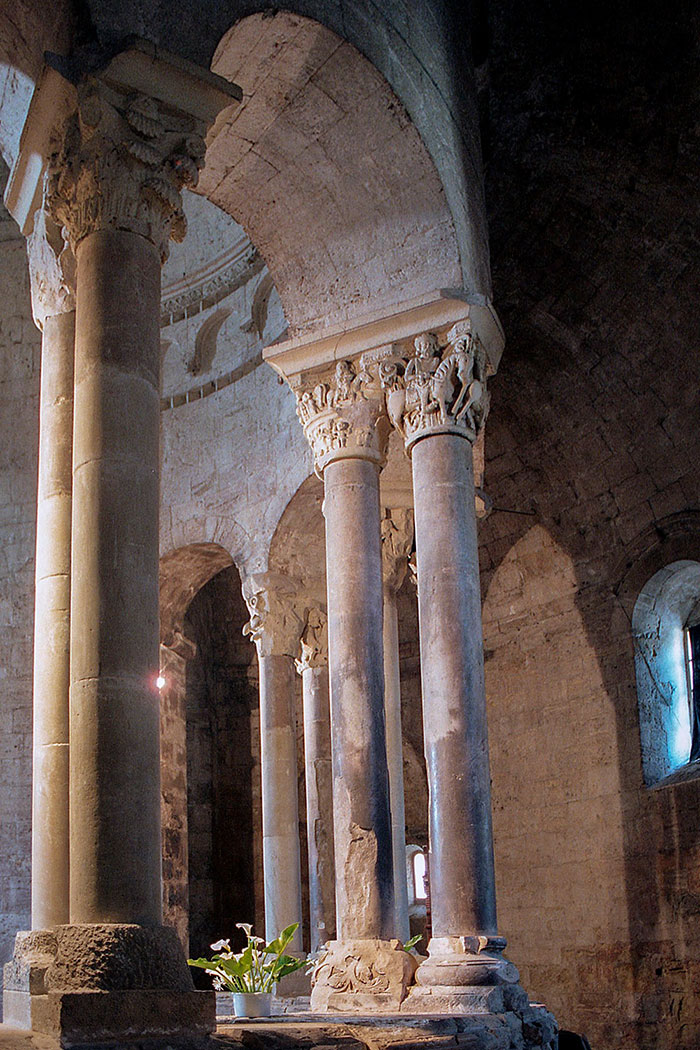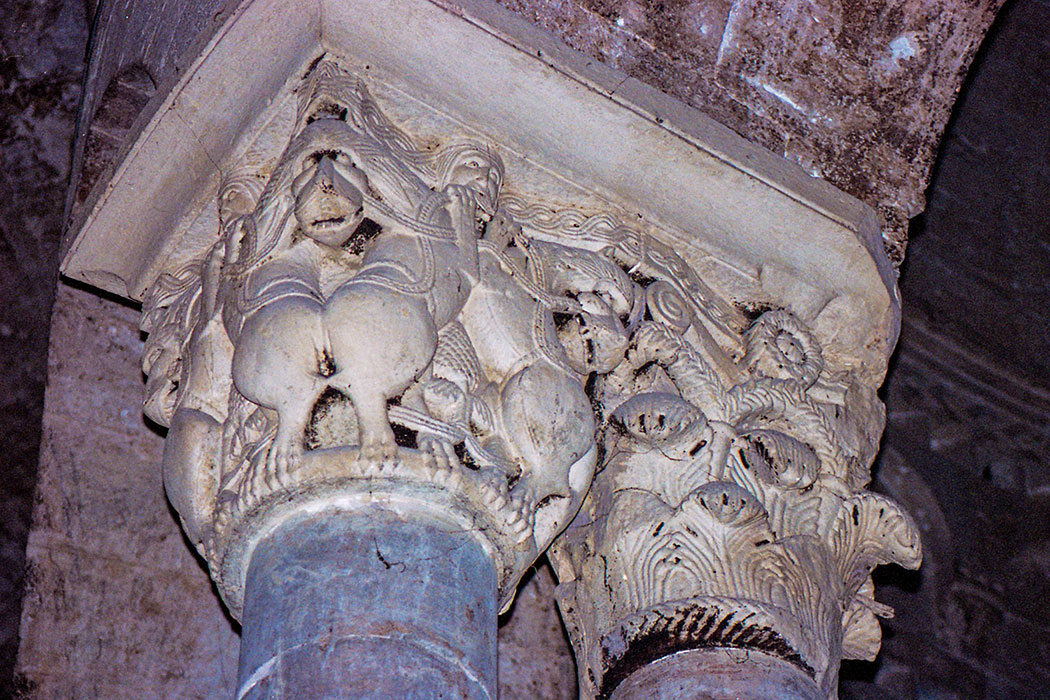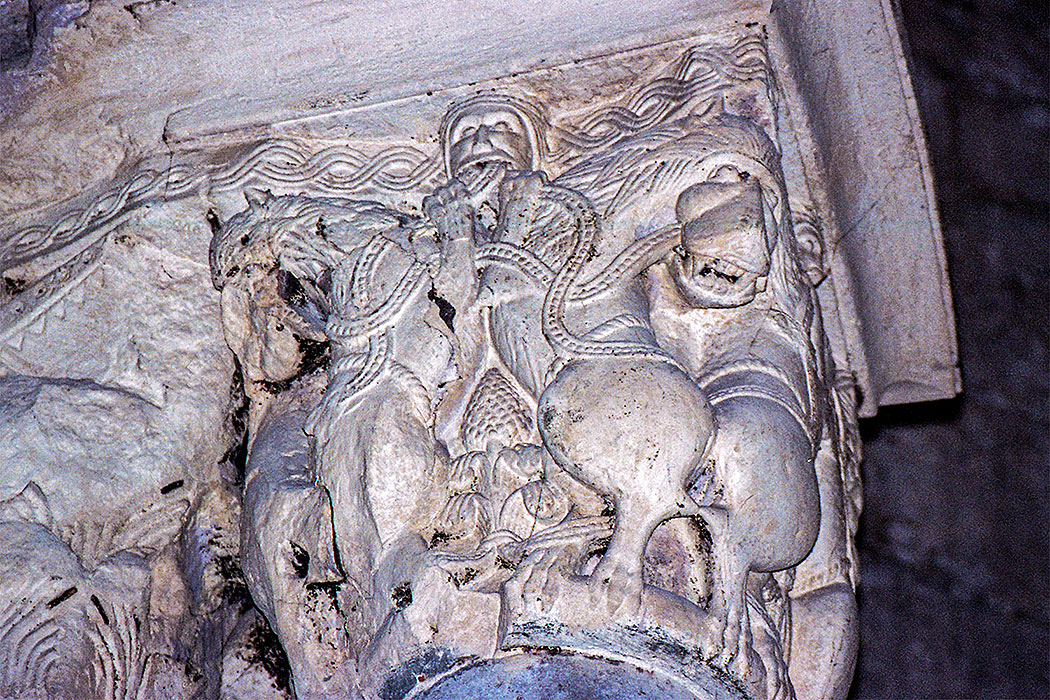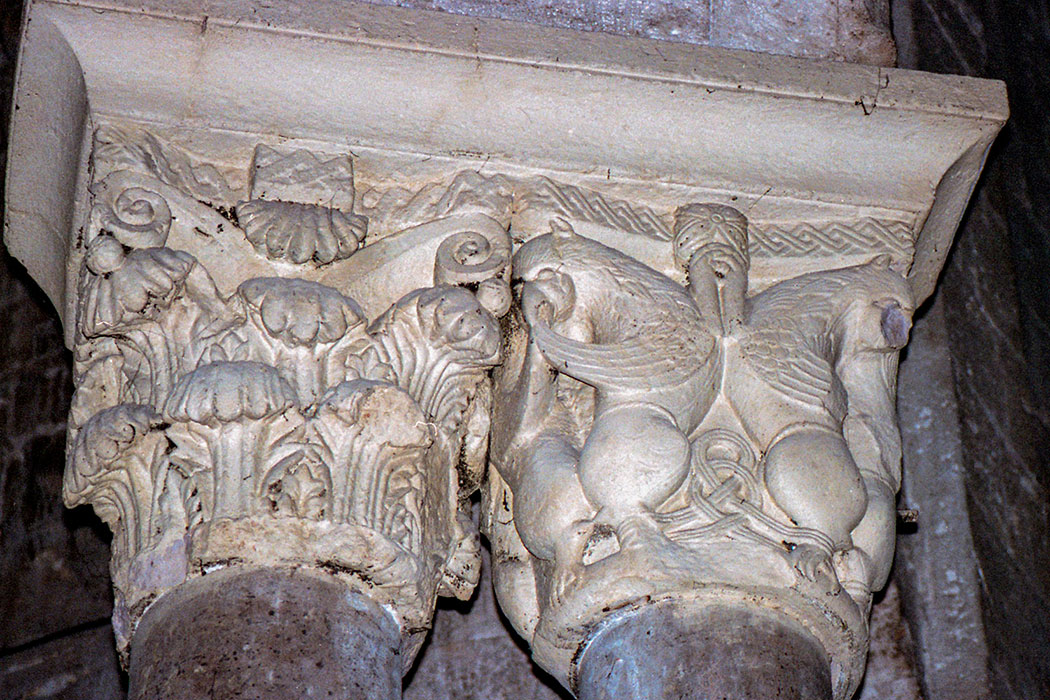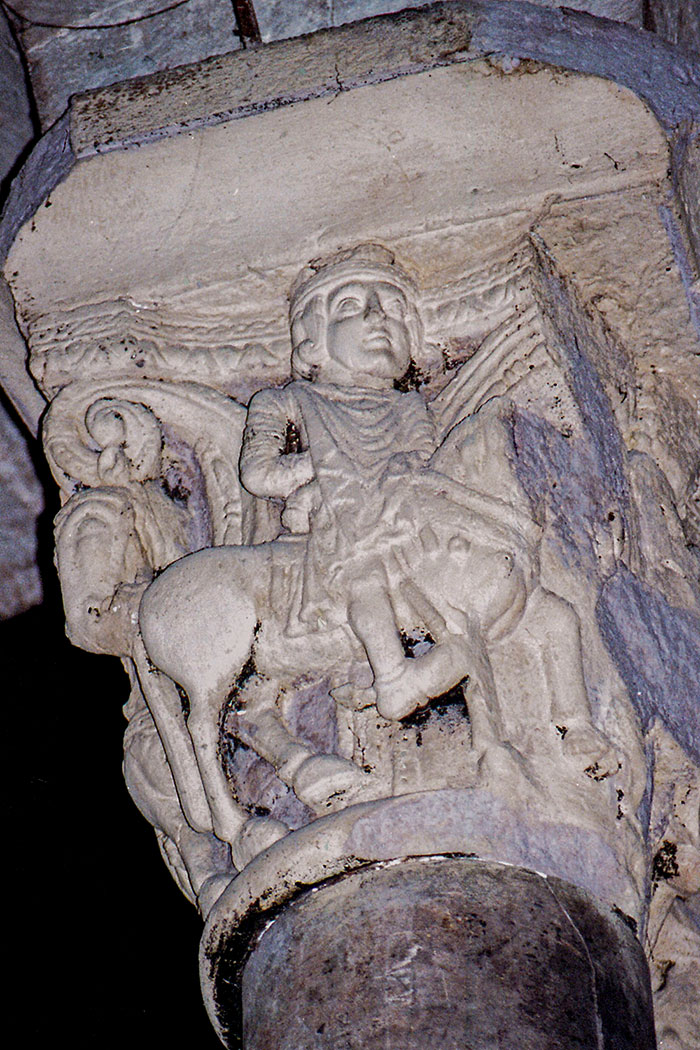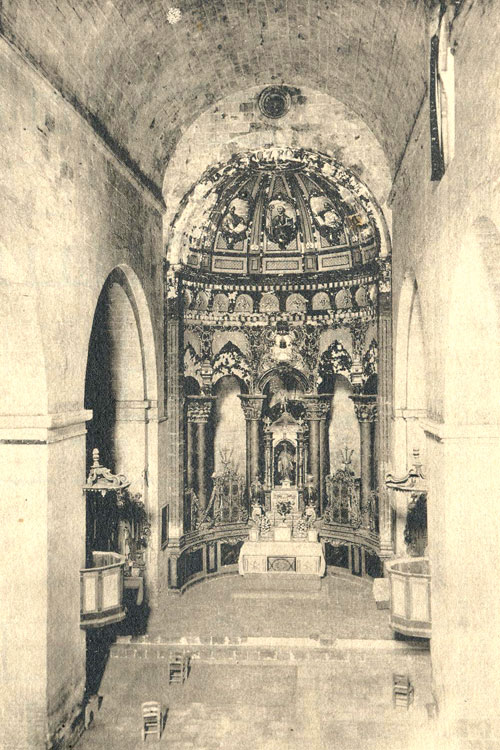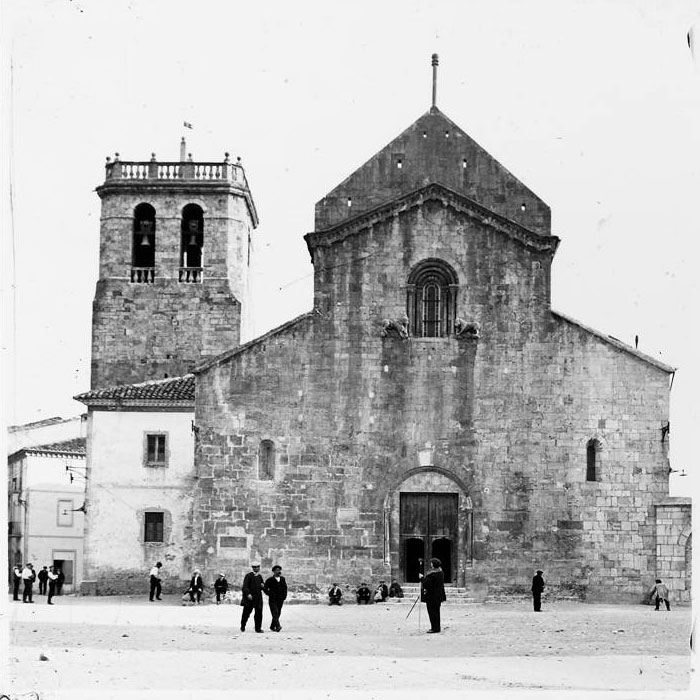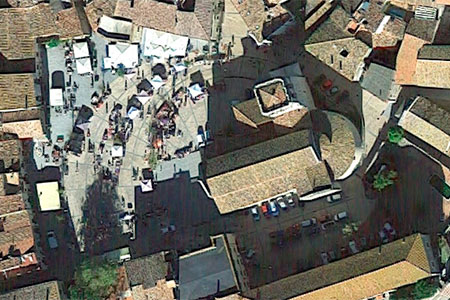The Benedictine Abbey of Sant Pere de Besalú was founded in 977 by Count-Bishop Miró III Bonfill, who placed it under the patronage of the Holy See. He also donated various rights and possessions to it, including some churches. In the following year, he increased those first donations with some more. The founder also sent the relics of the holy martyrs Primus and Felician from France. Its existence was made official in 979 with a bull issued by Pope Benedict VII, which also confirmed its possessions and its direct link with Rome, which reserved the right to choose the abbot.
The monastic church was consecrated in 1003 by Bernard I, called Taillefer, also Count of Besalú, who made efforts to increase the monastery's patrimony with new donations. Complications and differences between the county of Besalú and the abbey arose with Bernat's successor, Guillem I el Gras, who was even excommunicated for appropriating the monastery's assets. Seeking to reform it, Count Bernat II joined it in 1070 to Saint-Victor de Marseille (Bouches-du-Rhône), a union that did not last long, as in 1086 it no longer depended on that Provençal abbey.
In 1111 the county of Besalú was united with the county of Barcelona and this indirectly led to an improvement in the prosperity of the monastic center as the abbot became the first authority in Besalú. During this period, under Ramon Berenguer III and the following years, the monastery's patrimony was further increased.
In 1424, the priory of Sant Joan les Fonts (Garrotxa) was joined to it. This period of prosperity lasted until the 15th century and diminished considerably with the arrival of the commendatory abbots in the 16th century. As part of the monastic reorganisation of the territory, in 1592 the monasteries of Sant Llorenç del Mont and Sant Quirze de Colera (Alt Empodà) were joined to it, at the same time as it was integrated into the Congregació Claustral Tarraconense. It suffered the negative effects of the Reapers' War and in the mid-16th century the place was in a pitiful condition and even for a short period of time the novitiate of the Benedictine order was moved here. Later, it experienced an economic resurgence that allowed it to undertake works to improve the monastic buildings.
At the end of the 18th century, it was again affected by war, with the French Revolution which, although it did not directly affect Besalú, led to the loss of valuable objects. The War of Independence transformed the abbey into barracks and the cloister was demolished. In 1835 the monastery was dissolved because of the disentailment. Shortly after the church was restored to its original use, it underwent further destruction and an attempt at monastic refoundation. During the Civil War, in the 20th century, the monastery was once again damaged. As a result of the unfortunate events of the last two centuries, the monastery lost or dispersed much of its movable heritage and archives.
The Romanesque church remains, with three naves and a semicircular apse that covers them all, including an ambulatory. It has a transept with small open apses in the thickness of the walls, which are not visible from the outside. The ambulatory is separated from the presbytery by double columns with well-made capitals, but which have suffered the effects of the fire of 1936. The main façade, to the west, is simple, with only a large window flanked by two figures of lions: below, the entrance door with a column on each side and a single archivolt.
- BARRAQUER I ROVIRALTA, Gaietà (1906). Las casas de religiosos en Cataluña durante el primer tercio del siglo XIX. Vol. 1. Barcelona: F. J. Altés
- BARTOLOMÉ, Laura; i altres (2003). Sant Pere de Besalú. 1003-2003, una història de l’Art. Besalú: Ajuntament de Besalú
- COSTA, Xavier (2019). Paisatges monàstics. El monacat alt-medieval als comtats catalans (segles IX-X). Tesi doctoral. Universitat de Barcelona
- GALIMANY I ARNAU, Manuel (1990). Sant Pere de Besalú. Catalunya romànica. Vol. IV. La Garrotxa. Barcelona: Enciclopèdia Catalana
- GAVÍN, Josep M. (1978). Inventari d'esglésies. Vol. 4. Garrotxa, Ripollès. Gtxa. 64. Barcelona: Artestudi
- MERINO, Antolín (1819). España sagrada. Vol. XLIII. De la santa Iglesia de Gerona y su estado antiguo. Madrid: Collado
- MONSALVATGE Y FOSSAS, Francesc (1890). Besalú, su historia, sus condes, su obispado y sus monumentos. Noticias históricas. Vol. II. Olot: J. Bonet
- MONSALVATGE Y FOSSAS, Francesc (1890). Los monasterios del antiguo condado de Besalú. Noticias históricas. Vol. VIII. Olot: J. Bonet
- MONSALVATGE Y FOSSAS, Francesc (1909). Nomenclator histórico de las iglesias... Noticias históricas. Vol. XVII. Olot: J. Bonet
- PALAHÍ, Lluís VIVÓ, David (1996). Excavacions al claustre de l'antic monestir de Sant Pere a Besalú. Quaderns de les Assemblees d’Estudis, núm. 8.
- PALAHÍ, Lluís; VIVÓ, David (2010). Memòria d'excavació a Prat de Sant Pere (Plaça dels Claustres). Generalitat de Catalunya
- SÉQUESTRA, Amand (1934). Sant Pere de Besalú. Abadia reial de la Congregació Benedictina Claustral Tarraconense (977-1835). Ed. Santa Maria del Mont
